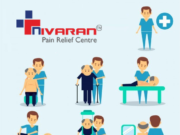This type of cost center may coincide with other types of cost centers, as companies may want to know the non-personnel cost of a specific department, for example. Cost centre provides you with information that is extremely crucial for a company’s growth and sustainability. With budget allocated to different departments that enable a business to become more efficient, tracking of incomes and expenses becomes much more seamless. Cost centre helps businesses track the cost by function and allow the management to allocate limited funds more carefully. For example, service cost centers will incur costs related to salaries, rent, and office supplies. Production cost centers will have costs related to raw materials, machinery, and labor.
Similarly, a country division is also treated as a profit center, as may a product line. Cost centers are categorized in different ways depending on their purpose and the type of costs incurred. The four primary types of cost centers are administrative, manufacturing, service, and retail.
- The articles and research support materials available on this site are educational and are not intended to be investment or tax advice.
- A service cost center involves providing services to the production department.
- For example, without a manufacturing cost center, the company would have no product to sell.
- A cost centre is a business unit or area within an organization that incurs costs and allows for easier tracking of expenses.
A cost center is a department or function that costs your business money to run but doesn’t generate any direct revenue. A cost center is a department or function within an organization that does not directly add to profit but still costs the organization money to operate. Cost centers only contribute to a company’s profitability indirectly, unlike a profit center, which contributes to profitability directly through its actions. Managers of cost centers, such as human resources and accounting departments are responsible for keeping their costs in line or below budget. Cost center management is a vital aspect of modern business, enabling more precise control and understanding of expenses. From understanding its definition and types to grasping the benefits, challenges, and methods of implementation, a detailed view of cost centers brings clarity to financial operations.
Ways to Use AI Writing Assistants For Customer Service
A cost centre is a business unit or area within an organization that incurs costs and allows for easier tracking of expenses. Cost centres can be used to help companies manage their spending and make sure that resources are being utilized efficiently. They also provide useful information about finances, allowing businesses to make informed decisions about budgeting and resource allocation. Knowing how to properly utilize cost centres is key in developing a successful financial strategy for any organization.
- They can also save the company thousands or even millions of dollars depending on the size of the lawsuit, but they don’t actually contribute to the sales or production level of the business.
- While they’re not designed to make a profit, they do enhance the profitability of a company by providing these benefits.
- Its adaptability and features make it suitable for handling complex cost-center management tasks.
- This isn’t to say that these departments aren’t necessary and can’t save the company money in the long-term.
- In many cases, these departments often take away a company’s production capacity because they tie up resources that could be used on the factory and production floor.
On a related note, cost centers may also identify where current deficits exist and more resources need to be delivered. Companies can compare cost centers from different regions or teams to better understand the resources successful cost centers have and how they need to better support other areas. A cost center isn’t always an entire department; it can involve any function or business unit that needs to have its expenses tracked separately. External users of financial statements, including regulators, taxation authorities, investors, and creditors, have little use for cost center data. Therefore, external financial statements are generally prepared with line items displayed as an aggregate of all cost centers.
Types of cost centres
While a cost center contributes no revenue to a balance sheet, it has both assets and liabilities. We empower our customers to grow their business, easily manage it and bring out the best productivity from their employees. In other words, a cost unit is a standard or unit of measurement of the goods manufactured or services rendered. After costs have been ascertained, accumulated, classified, and recorded, they must be related to a convenient measure of the quantity of the product or service.
Better Customer Experience
Many years ago, Debra’s Department Store began as a small, local hardware store, but as Debra added different departments, her revenue grew. Now she has 10 profit centers which include clothing, electronics, furniture, drugs, and home goods, along with several others. But as important as it is to produce revenue, there are expenses involved in running your business as well. A cost center is an employee or a department within your company that performs those expense-bearing, necessary tasks. A production cost center refers to a cost center that is engaged in regular production (e.g. converting raw materials into finished products).
Importance and benefits of cost centre
A company may decide it wants to include or exclude the cost of employees for a certain region. In addition, be mindful that a locational cost center must also exclude revenue even if revenue is generated in the region. The sales of that region would simply be reported in a different profit center. Cost centers are often assigned their own general ledger coding that management and personnel can use to absorb and report costs. As budgets are prepared, cost centers are intentionally forecast to operate as a loss; in fact, budgeted revenue will be $0. Instead, management’s goal is to minimize the deficit of a cost center while still providing general support to profit centers.
Companies can opt to segment out cost centers however they choose, as the end goal of a cost center is to isolate information for better internal data collecting and reporting. Here are several common types of cost centers along with examples of each. However, this more detailed view of cost centers requires more detailed information tracking, and so is not commonly used. The sum of Research, Planning, and Implementation of new plans will be the total for this department. Cost center activities are always included on your company’s balance sheet.
Cost Centers Help Executives Report Expenses to Stakeholders
They function by differentiating between certain revenue-generating activities. This facilitates a more accurate analysis and cross-comparison among divisions. A profit center analysis determines the future allocation of available resources and whether certain activities should be cut entirely. As an example, they may investigate the customer financing arm of the business to see if it is creating the necessary profit. For instance, a company may sell products or services that were developed in its research and development cost center.
A cost center is a department or group of employees within an organization that incurs costs. Common examples of cost centers include marketing, bookkeeping questions human resources, and research and development. A cost center is a reporting unit of a business that is responsible for costs incurred.
The HubSpot Customer Platform
For example, if you want to compare the ledger-wise details of Staff A and Staff B, open the Cost Centre Breakup report for Staff A, press Alt+C (New Column) and select Staff B. These are the cost units for the above-mentioned businesses and include parameters of physical measurement. A cost unit is defined as “a unit of quantity of product, service, or time (or a combination of these) in relation to which costs may be ascertained or expressed.” Running a cost center is a logistical burden that requires a company to perform potentially extra work to track, collect, and analyze information.
A cost center is a business unit that is only responsible for the costs that it incurs. The manager of a cost center is not responsible for revenue generation or asset usage. The performance of a cost center is usually evaluated through the comparison of budgeted to actual costs. The costs incurred by a cost center may be aggregated into a cost pool and allocated to other business units, if the cost center performs services for the other business units. Examples of cost centers are the accounting, human resources, IT, maintenance, and research & development departments.
While cost centers may not generate immediate revenue, they’re still vital to customer success and the success of your organization. Even though they cost money to run in the short-term, they usually add value to the customer experience over time — like in the billing example above. At the heart of cost centers is the notion of fiscal responsibility, the idea that different groups of individuals should be responsible for the financial outcome of their area. By separating out groups, even groups that do not make money, department leaders are put in charge about managing their team’s finances. It is acknowledged upfront that a cost center will be unprofitable; however, a manager can still be held accountable to the degree at which they operate at a loss.
Customer service teams are one of the most common examples of cost centers because it’s their primary responsibility to ensure customer delight. These teams work closely with customers every day and make sure people are satisfied with their purchases. If a problem comes up, the service team is responsible for making sure the customer is happy and willing to return for another purchase.
This allows them to assess the profitability of each product and service and allocate resources more efficiently. Budgeting is also an essential part of the cost centers analysis as businesses can track expenses and create a more accurate budget for the future. You can maintain your incomes and expenses, as per different business units, employees, projects, departments, and so on, using the Cost Centre capability in TallyPrime. You can have one or more cost centres or profit centres in your company, as needed, and allocate the breakup of incomes and expenses to different cost centres or profit centres. TallyPrime provides reports that help you to view income and expense groups with the profit centre or cost centre allocations made under each group.
It defined a cost center a location, person, or item of equipment (or a group of these) for which costs may be ascertained and used for the purposes of cost control. In any business, understanding where and how expenses are incurred is key to success. They’re like a magnifying glass that zooms in on specific departments or areas, allowing us to see exactly how money is being spent. For this reason, instead of having to juggle multiple competing priorities that detract resources from certain areas, cost centers can focus on what they do best. This means service departments that interact with customers can prioritize the service they deliver and not need to worry about the financial implications of needing to generate a profit. By showcasing operational excellence, the cost centers manage to keep a check on the costs incurred by them and stick to the budgetary restrictions.


































